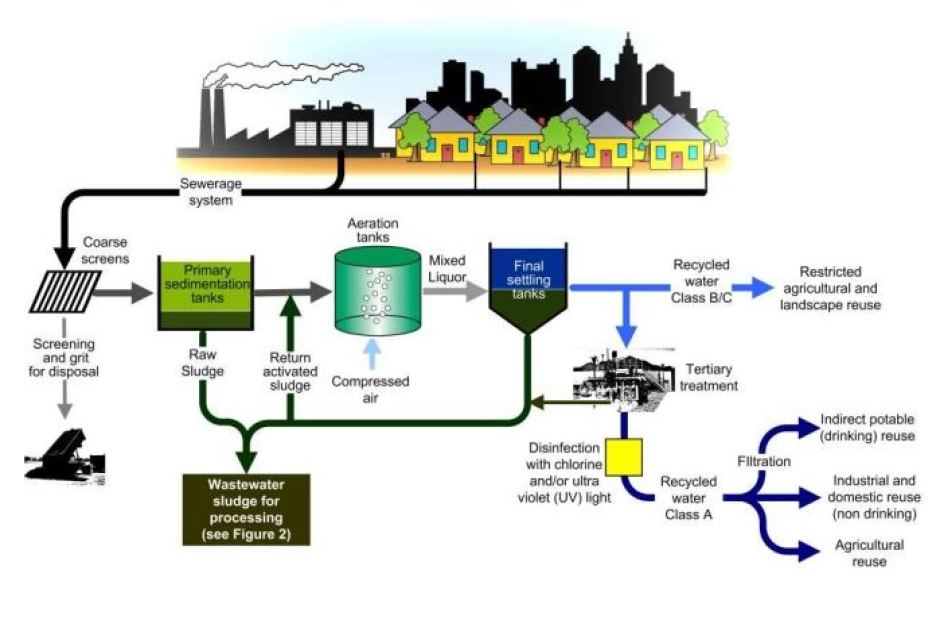Industrial Waste Water Treatment-- Cutting-Edge Technologies for Water Filtration
Industrial Waste Water Treatment-- Cutting-Edge Technologies for Water Filtration
Blog Article
Trick Strategies in Hazardous Waste Water Therapy Processes
The treatment of commercial wastewater is an essential aspect of environmental management, including an array of strategies created to reduce the effect of impurities. Developments in technologies such as membrane layer filtration and advanced oxidation processes supply innovative remedies for boosting treatment efficiency.
Physical Therapy Techniques
How effectively can physical therapy approaches resolve the complexities of commercial wastewater? Physical therapy methods play a pivotal function in the preliminary stages of wastewater management, focusing largely on the elimination of solids and large particulates. Strategies such as flotation protection, sedimentation, and purification are vital for decreasing the concentration of put on hold solids, therefore improving the effectiveness of subsequent therapy procedures.
Sedimentation includes the gravitational settling of solids, allowing for the splitting up of much heavier materials from the wastewater. This approach is especially effective in making clear water before biological or chemical treatments. Purification, on the various other hand, utilizes various media to capture particle matter, ensuring that smaller sized pollutants are removed. This method can be tailored to suit different kinds of industrial effluents, producing more clear effluent streams.
In addition, flotation techniques, which utilize air bubbles to raise put on hold solids to the surface for elimination, are effective in dealing with wastewater with high focus of fats, oils, and greases. On the whole, physical treatment approaches act as an essential initial step in the comprehensive administration of commercial wastewater, ensuring that the lots on subsequent treatment phases is minimized and improving total treatment effectiveness.
Chemical Therapy Strategies
While physical treatment approaches prepared for effective wastewater administration, chemical treatment strategies are vital for addressing the extra complicated impurities commonly found in commercial effluents. These methods use various chemical representatives to speed up, counteract, or oxidize harmful compounds, guaranteeing a more thorough removal of toxins.
One common technique is coagulation and flocculation, where chemical coagulants such as aluminum sulfate or ferric chloride are added to advertise the aggregation of suspended fragments. This process improves solid-liquid splitting up, reducing turbidity and enhancing water top quality. Additionally, neutralization processes are utilized to readjust the pH of wastewater, utilizing acids or bases to reduce the effects of acidic or alkaline streams, specifically.
Oxidation-reduction responses play a crucial function in derogatory natural contaminants and pathogens. Chemical oxidants like hydrogen, chlorine, or ozone peroxide are utilized to break down complicated organic substances, making them much less harmful or much more naturally degradable. In addition, progressed oxidation procedures (AOPs) combine multiple oxidation techniques to improve contaminant removal effectiveness.
Organic Therapy Procedures
The performance of wastewater therapy is dramatically boosted by organic therapy procedures, which harness the natural metabolic activities of microorganisms to break down organic matter and remove toxins. Industrial Waste Water Treatment. These procedures mostly entail anaerobic and cardiovascular food digestion, each tailored for particular kinds of wastewater
Cardio treatment procedures use oxygen to support microbial development, promoting the malfunction of organic contaminants into co2 and water. Usual techniques include turned on sludge systems, where oygenation storage tanks help with the blending of wastewater with bacteria, and dripping filters, which encourage biofilm growth on media surfaces.
Conversely, anaerobic therapy processes occur in the lack of oxygen, using anaerobic microorganisms to disintegrate organic matter, causing biogas production, a renewable resource source. Anaerobic digesters are usually utilized in industrial setups for this purpose, properly decreasing the quantity of sludge while producing beneficial biogas.
The choice of an organic treatment approach depends upon wastewater characteristics, therapy goals, and regulative standards. The combination of organic processes in wastewater therapy not only improves toxin look at this now removal performance but additionally promotes sustainability by lessening chemical use and supporting source recuperation.
Advanced Oxidation Processes

Typical AOP strategies include Fenton's reagent, photocatalysis, and ozonation. Fenton's reagent, a mix of hydrogen peroxide and ferrous iron, militarizes find the formation of hydroxyl radicals, making it effective for dealing with wastewater having phenolic compounds and other recalcitrant compounds.
AOPs supply several advantages, including minimized sludge manufacturing and the capacity to treat wastewater with high concentrations of organic contaminants. Nevertheless, the execution of AOPs calls for careful consideration of operational specifications and cost-effectiveness, making certain that these advanced techniques are appropriately integrated into existing wastewater treatment systems.
Membrane Layer Purification Technologies

Microfiltration works for removing suspended solids and germs, while ultrafiltration targets smaller sized natural molecules and viruses. Nanofiltration connects the space between ultrafiltration and turn around osmosis, properly getting rid of organic compounds and divalent ions. Reverse osmosis offers the highest degree of purification, utilized mostly for desalination and getting rid of mono-valent ions.
Membrane layer modern technologies supply countless benefits, consisting of reduced power intake contrasted to typical therapy approaches, modular layout for scalability, and the possibility for water recuperation and reuse. Obstacles such as membrane layer fouling and the demand for normal upkeep should be dealt with to ensure system efficiency. Overall, membrane layer filtration innovations represent a vital part of modern industrial wastewater treatment approaches, promoting sustainability and source preservation in water administration.
Conclusion
In final thought, commercial wastewater treatment utilizes a varied array of methods, consisting of physical, chemical, biological, and advanced approaches. Continued developments in these techniques will additionally improve the effectiveness and performance of wastewater treatment processes in industrial setups.
The therapy of industrial wastewater is an essential aspect of environmental administration, entailing a range of methods created to minimize the impact of contaminants.Exactly how properly can physical therapy methods deal with the complexities of industrial wastewater?Advanced oxidation procedures (AOPs) stand for a cutting-edge technique in industrial wastewater treatment, developed to successfully weaken natural pollutants that are frequently resistant to traditional treatment techniques (Industrial Waste Water Treatment).In final thought, commercial wastewater therapy utilizes a varied variety of methods, consisting of physical, chemical, biological, and advanced techniques. Continued developments in these approaches will better boost the performance and performance of wastewater therapy procedures in industrial settings
Report this page